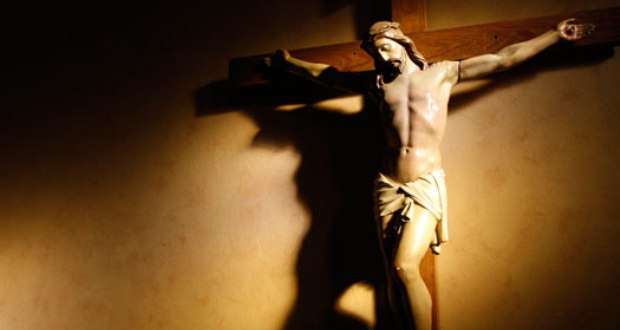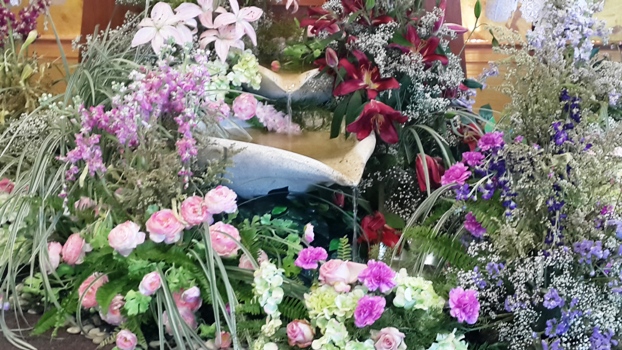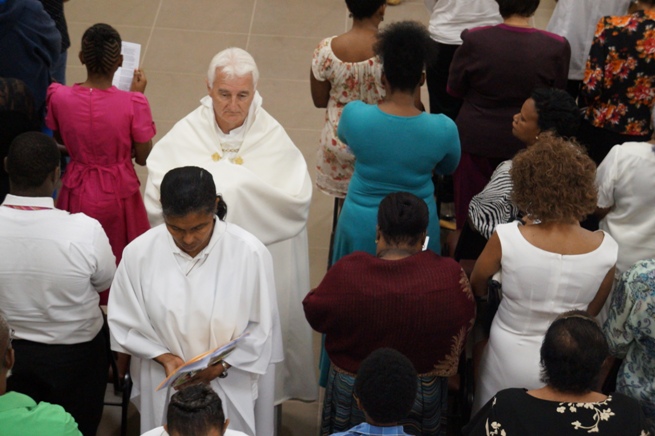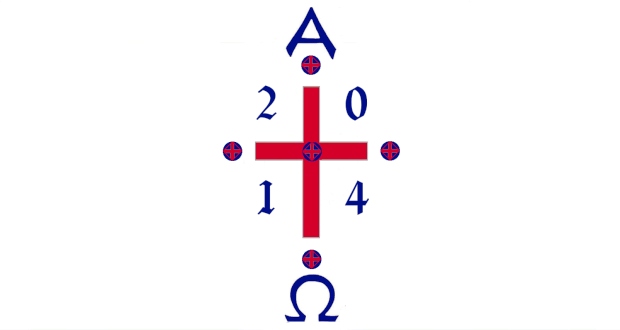Good Friday – The Second Day Of The Easter Triduum

[simpleazon-image align=”left” asin=”1612787673″ locale=”us” height=”375″ src=”http://ecx.images-amazon.com/images/I/41T-pK75zEL.jpg” width=”234″]On Good Friday, the entire Catholic Church takes a closer look at the Cross at Calvary. Each member of the Church attempts to comprehend at what expense Christ has actually won our redemption. In the solemn ceremonies of Good Friday, in the Adoration of the Cross, in the chanting of the ‘Reproaches’, in the reading of the Passion, and in receiving the pre-consecrated Host, we unite ourselves to our Saviour, and we ponder our own death to sin in the Death of our Lord.
The Church – stripped of its accessories, the altar bare, and with the door of the empty tabernacle standing open – is as if in mourning. In the fourth century the Apostolic Constitutions described this day as a ‘day of mourning, not a day of festive happiness,’ and this day was called the ‘Pasch (passage) of the Crucifixion.’
The holiness of this day is highlighted by the silent entry of the celebrants who then prostrate themselves face down, on the alter. The liturgical observance of this day of Christ’s suffering, crucifixion and death seemingly has actually been in presence from the earliest days of the Church. No Mass is celebrated on this day, however the service of Good Friday is called the Mass of the Pre-sanctified because Communion (in the types of bread) which had already been consecrated on Holy Thursday is given to the people.
In many parts of the world, there are no musical instruments from the end of Holy Thursday until the Alleluia at the Easter Vigil, with the only music throughout this period being unaccompanied chants.
The omission of the prayer of consecration increases our sense of loss on this one of the holiest days of the year. The desolate quality of the rites of this day reminds us of Christ’s suffering and humiliation throughout his Passion and death. The structure of the Good Friday service is as follows:
-
Liturgy of the Word – reading of the Passion.
-
Intercessory prayers for the Church and the whole world, Christian and non-Christian. It is very interesting to note here the prayers that are lifted up to Almighty God here by Holy Mother Church. She does not only pray for her own, but rather, she sees as her own, the entire world, gentile or Jew, servant or free, Christian and non-christian, believer in Christ or atheist. The Catholic Church prays for all here.
-
Veneration of the Cross.
-
Communion, or the ‘Mass of the Pre-Sanctified.’
In the 7th century, the Church in Rome adopted the practice of Adoration of the Cross from the Church in Jerusalem, where a piece of wood believed to be the Lord’s cross had been venerated every year on Good Friday since the 4th century. According to tradition, a part of the Holy Cross was discovered by the mother of the emperor Constantine, St. Helen, on a trip to Jerusalem in 326. A 5th century account explains this service in Jerusalem. A coffer of gold-plated silver consisting of the wood of the cross was brought forward. The bishop positioned the relic on a table in the chapel of the Crucifixion and the faithful approached it, venerating it as the priest said what every priest has said ever since: ‘Behold, the Wood of the Cross.’
Love or veneration of an image or representation of Christ’s cross does not indicate that we are in fact adoring the material image, obviously, but rather what it represents. In kneeling before the crucifix and kissing it we are paying the highest honor to the our Lord’s cross as the means to our salvation. Because the Cross is inseparable from His sacrifice, in reverencing His Cross we are, in impact, adoring Christ. We are therefore affirming what we pray several times duruing the Stations of the Cross: ‘We adore Thee, O Christ, and we bless Thee because by Thy Holy Cross Thou has Redeemed the World.’
As this is a day of mourning, Catholics should, if possible, refrain from work and take part in the liturgy. The Church also instructs that Good Friday is a day of fasting and abstinence. For Catholics in between the ages of 18 and 59, one full meal and two small meals are recommended. All Catholics older than 14 years of ages should avoid meat.
Conversations must be considerate, and we need to limit our exposure to TV, music, the internet, and other activities that would distract us from fully taking part in the commemoration of the day.





